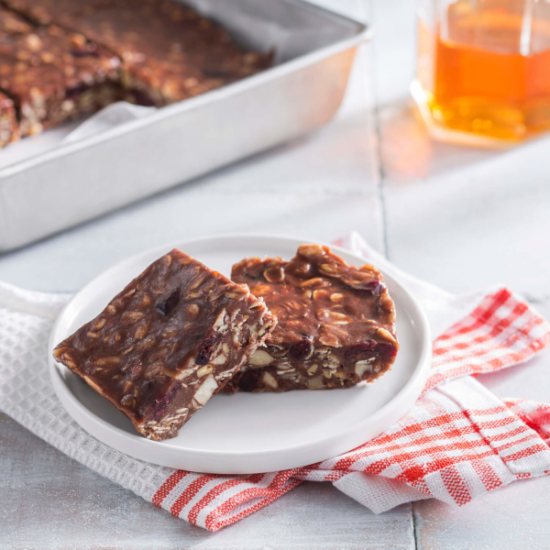
February is here, which means that the almond fields of California are abuzz as honey bees prepare to kick off the pollination season. After a chilly winter, honey bees are trucked over to sunny California in February to prepare for the short almond blooming season that takes place from mid-February to mid-March. To celebrate, we're exploring the mutually beneficial relationship between honey bees and almonds.
Pollinating the Global Food Supply
Pollinators are the true stewards of our global food supply and keep our world turning, in particular the honey bee. In addition to making the golden liquid of their namesake, honey bees also perform the vital function – a second shift as we like to call it - of pollination, or the transferring of pollen from plant to plant, thus fertilizing the plants and enabling them to bear fruit. Without the honey bees' pollination work, the quantity and quality of many crops would be reduced and some would not yield at all. Simply by doing what comes naturally to them, pollinators contribute billions of dollars to U.S. agriculture.
Many of the ingredients that contribute to a balanced and healthy diet wouldn’t be possible without honey bees, including foods like fruits, vegetables and nuts. Not to mention meat and dairy, which depend on bees to pollinate livestock feed crops, like alfalfa. But perhaps one of the most significant relationships between crop and pollinator is almonds and honey bees, and it is as mutually beneficial as it is vital.
Almond Pollination: A Mutually Beneficial Relationship
Right now, honey bees are in California gearing up for the largest event of the migratory season – the pollination of almonds. Did you know that California grows 80% of the world’s almonds? And since almonds are 100% dependent on honey bees for pollination during their short blooming season (mid-February – mid-March), more than 1 million hives are buzzing in CA getting ready to pollinate 800,000+ acres of almond crops! With that said, there’s no denying that honey bees are vital to almonds, but almonds are just as important to honey bees.
In most cases, almond pollen is the first natural food source that honey bees encounter following a long, cold winter. This nutrient-rich food source helps strengthen the hive, which often leads to beekeepers splitting the hive and grow their apiaries (bee farm) after the almond bloom. Want to learn more about the relationship between honey bees and almonds? The NHB teamed up with the Almond Board of California, Project Apis m. and CollaborateUp to film a documentary that puts almond growers and beekeepers in each other’s shoes, offering a firsthand look at what each industry does to protect bees. Check out “The Job Swap Experiment” here.
Almonds + Honey: A Delicious Pair
In celebration of the kick-off to pollination season, we wanted to share some of our favorite honey and almond recipes. As versatile as they are delicious, this pairing spans your entire menu, from morning coffee and kid-friendly treats to dinner and dessert. Check out 12 of our favorite recipes below.
We want to hear from you! What is your favorite honey and almond dish? Tell us about it in the comments below.












